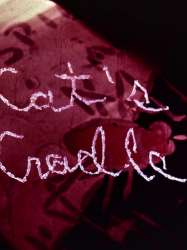Scenes from Under Childhood is a american film directed by Stan Brakhage
Scenes from Under Childhood (1967)

If you like this film, let us know!
Directed by Stan Brakhage
OriginUSA
Scenes from Under Childhood is a series of 16mm film in four independent sections by the American experimental filmmaker Stan Brakhage produced between 1967 and 1970. All four sections are silent, though Brakhage made a version with sound available for the first section.
The film is often described as an attempt by Brakhage to visualize how his children saw the world. In a 2008 Village Voice review, critic J. Hoberman wrote described the film as a "glorious, two-hour plus romantic epic." In a 1992 poll for the British film magazine Sight & Sound, experimental filmmaker Michael Snow named Scenes from Under Childhood as one of the ten greatest films of all time.
When asked to describe the film, Brakhage himself wrote that it was "a visualization of the inner world of foetal beginnings, the infant, the baby, the child – a shattering of the ‘myths of childhood’ through revelation of the extremes of violent terror and overwhelming joy of that world darkened to most adults by their sentimental remembering of it… a ‘tone poem’ for the eye – very inspired by the music of Olivier Messiaen.
Comments
Leave comment :
Suggestions of similar film to Scenes from Under Childhood
There are 20 films with the same director, to have finally 20 suggestions of similar films.If you liked Scenes from Under Childhood, you will probably like those similar films :

Pasht (1965)
Directed by Stan Brakhage, Viji Thampi
Actors Jayaram, Suresh Gopi, Urvashi, Babu Antony, Silk Smitha, Sukumaran
Rating45%





New Year is a murder mystery remade from Alfred Hitchcock' s classic Dial M for Murder.

Cat's Cradle (1959)
, 6minutesDirected by Stan Brakhage
Origin USA
Genres Animation
Actors Carolee Schneemann, Stan Brakhage
Rating59%






Window Water Baby Moving (1959)
, 12minutesDirected by Stan Brakhage
Origin USA
Genres Documentary
Actors Stan Brakhage
Rating74%






Thigh Line Lyre Triangular (1961)
, 5minutesDirected by Stan Brakhage
Origin USA
Genres Documentary
Rating55%






Interim (1952)
, 26minutesDirected by Stan Brakhage
Origin USA
Genres Drama, Romance
Rating66%





The film contains no dialogue, starring only a man and a woman, who meet as if by chance and walk into the countryside together where they stop and kiss. They then return to town before parting again.
 Connection
Connection




